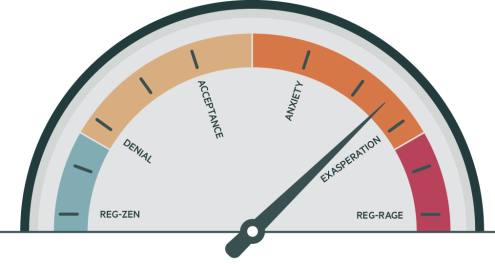At a glance
- The Directorate-General for Financial Stability, Financial Services and Capital Markets Union has launched a consultation to replace the current OTC derivatives identifier
- The consultation will decide which of the two proposed identifiers better serves the needs of the market
- As the financial sphere keeps evolving, regulating bodies need to sharpen their tools to keep up with the ongoing developments within the sector
Advancements in information and computer technology have led to the rapid growth of the over-the-counter (OTC) derivatives market. The development of such derivatives over the past few decades has allowed financial institutions to improve their worldwide trade of capital, among other benefits.
According to a survey by the Bank of England, the UK remains the largest centre for OTC interest rate derivatives activity, which accounted for more than 45% of global turnover in April 2022. However, the OTC market comes with its fair share of risks, which stem from the fact that the sector is mostly unregulated, and lack of transparency remains an issue within the sector.
On November 29, the Directorate-General for Financial Stability, Financial Services and Capital Markets Union, the department tasked by the European Commission to overlook EU policies on financial services, opened a targeted consultation to replace the current OTC derivatives identifier.
Purpose of the consultations
The consultation revolves around the release of two OTC derivatives identifiers that were issued by the Derivatives Service Bureau (DSB). They are the International Securities Identification Number (ISIN), which is used in the EU for price transparency and to detect abuse within the market, and the Unique Product Identifier (UPI), which will be launched in the EU in April 2024.
Emma Kalliomaki, managing director of the DSB, says it is important to underline that the two options that are being presented lead to the same conclusion on the data elements, but they are just wrapped in a different way.
“We have the ISIN proposal for interest rate swaps, which has a modification that removes the expiry date and adds the contact term and the forward starting term, which will all sit within the identifier,” says Ms Kalliomaki. “We also have the UPI, which can be used as an identifier, but you would then need additional data elements to be captured and reported separately to achieve the appropriate granularity,” she adds.
The target of this consultation is firms that participate within the OTC derivatives value chain, which includes companies that use interest rate and credit derivatives to hedge interest rates and credit risks and investment firms and asset managers that do the same to hedge investment portfolios, among other things.
“I think that the consultation is important because we need to know the implication of the two options for market participants with regards to their implementation, integration and the quality of the data for transparency purposes, but also for the identifiers themselves as they have different purposes,” comments Ms Kalliomaki.
A developing market
While financial activities keep evolving at a rapid pace, the same cannot be said for the regulating bodies and instruments that are tasked to make sure that tools like OTC derivatives are being used within the legal parameters of the market. The decentralised nature of the OTC market also has an impact on transparency, as information about risk ownership and market concentration is often unavailable.
Ms Kalliomaki says that while the market has gone through extensive change over time, it has also allowed for a great deal of experience to be gained through the use of the existing identifiers. Although transparency is an important aspect of the derivatives market, she points out that neither of the proposed identifiers is designed with it at its core.
“We have understood that the ISIN identifier that exists today does not align with market convention because it wasn’t designed with transparency at its core, but rather for transaction reporting and supervision of market abuse,” comments Ms Kalliomaki. “The purpose of the new UPI identifier revolves around the global aggregation of OTC derivatives data by authorities, which came as a result of the financial crisis,” she says.
According to Ms Kalliomaki, discussions and developments around transparency have been progressing. Still, until enough data has been processed and we have fully understood the scope of the capabilities of different identifiers, it is too early to move to different use cases like transparency.
“If we modify the ISIN or introduce the UPI, we need to consider the impact on the other use cases and what it would mean for infrastructure changes, the implementation time and the downstream flows in regards to those changes,” she says.







